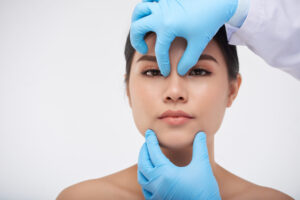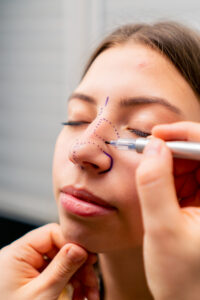In recent years, Korean rhinoplasty has gained international acclaim for its innovative techniques and ability to achieve subtle, natural results. As more patients seek out these advanced procedures, surgeons must stay ahead of the curve by refining their skills in this specialized area of cosmetic surgery. If you’re a surgeon looking to expand your expertise, finding the best Korean rhinoplasty course is essential. This article will guide you through what makes a great course, why Korean rhinoplasty stands out, and how to select the ideal training program to boost your practice.
1. Why Korean Rhinoplasty?
Korean rhinoplasty is renowned for its ability to create refined, natural-looking results with minimal invasiveness. Unlike traditional rhinoplasty procedures that often focus on dramatic changes, Korean techniques emphasize a more subtle approach, focusing on achieving facial harmony by reshaping the nose to suit the individual’s face. The key elements that distinguish Korean rhinoplasty from Western methods include:
- Precision and Aesthetic Sensibility: Korean surgeons have perfected techniques that cater to the unique anatomical features of Asian faces, including softer nasal bridges and more defined tip projections.
- Non-Surgical Options: Korean rhinoplasty also includes non-surgical procedures like PDO thread lifts and filler-based rhinoplasty, offering patients a less invasive, quicker recovery option with results that mimic surgical rhinoplasty.
For aesthetic professionals, mastering these techniques is not only about improving their skillset but also about offering patients the most up-to-date and effective solutions. Surgeons who can provide natural, harmonious results will be in high demand, setting them apart in a competitive field.

2. What Makes a Great Korean Rhinoplasty Course?
When choosing the best Korean rhinoplasty course for surgeons, certain features and elements are crucial to ensuring you get the most comprehensive, up-to-date, and valuable training. Here’s what to look for:
- Comprehensive Curriculum: The best courses will cover a wide range of topics, from the fundamentals of rhinoplasty to advanced techniques used in Korean nose surgery. Topics should include:
- Surgical Techniques: Detailed instruction on incisions, grafting, and reshaping nasal structures.
- Non-Surgical Methods: Learn to perform filler-based rhinoplasty and PDO thread lift procedures that provide non-invasive alternatives with minimal downtime.
- Patient Consultation: Training on how to assess patient needs, facial anatomy, and how to achieve natural-looking results.
- Hands-On Training: Theoretical knowledge is important, but practical experience is critical for mastering rhinoplasty. A good course will include:
- Live Demonstrations: Surgeons should be able to watch and participate in real-world procedures under expert guidance.
- Cadaver Labs: For surgical courses, hands-on training with cadavers or models is essential for mastering techniques and gaining comfort in performing the procedures.
- Experienced Instructors: Look for courses taught by world-renowned experts in Korean rhinoplasty. The best instructors will not only have experience in performing the procedures but also have a teaching background that ensures they can communicate their knowledge effectively.
- Post-Course Support: The top courses often offer ongoing mentorship or access to forums where surgeons can ask questions, discuss cases, and refine their techniques long after the course has concluded. This support is vital for maintaining skill levels and ensuring surgeons feel confident in performing these advanced procedures.
3. Key Features of the Best Korean Rhinoplasty Courses
- Certification and Accreditation: A recognized certification adds tremendous value to your professional profile. It demonstrates to patients and colleagues alike that you’ve completed an accredited program and are proficient in Korean rhinoplasty techniques. Look for programs accredited by respected medical bodies or universities, ensuring that your certification carries weight in the aesthetic industry.
- International Recognition: Korean rhinoplasty is an internationally respected specialty, and so is the training for it. Opt for a course that is globally recognized, especially if you plan on attracting international patients or working in a globally competitive aesthetic market.
- Course Duration and Flexibility: Different surgeons have different schedules, so it’s essential to choose a course that offers flexibility. Some courses are held in-person, while others may offer hybrid or online options. Consider the time commitment required for the course, as some may span several days or weeks, depending on the depth of training.
- In-Person Training: Ideal for hands-on learning and live demonstrations, but requires travel and time off.
- Online Courses: Offer flexibility and can be suitable for busy professionals looking to learn at their own pace.
- Hybrid Programs: Combine online learning with in-person workshops, giving the best of both worlds.
4. Top Korean Rhinoplasty Courses for Surgeons
- The Korean Rhinoplasty Masterclass: This course is an intensive, hands-on workshop for surgeons who want to learn the ins and outs of Korean rhinoplasty. It’s taught by leading experts in the field and focuses on both surgical and non-surgical techniques. The course includes live patient demonstrations and practical sessions, ensuring surgeons gain real-world experience.
- Duration: 5-7 days (depending on the location)
- Features: Certification upon completion, post-course mentorship, and live surgeries.
- Advanced Korean Aesthetic Surgery Training: This program offers comprehensive training in various aspects of Korean aesthetic surgery, including rhinoplasty. The course is structured to provide surgeons with the technical skills and knowledge required to perform Korean rhinoplasty procedures with precision.
- Duration: 10 days
- Features: Includes a mix of lectures, cadaver dissections, and live surgery observation.
- PDO Thread Lift and Filler Rhinoplasty Course: For surgeons focused on non-surgical rhinoplasty, this course is ideal. It covers the basics of PDO thread lifts and filler rhinoplasty, two of the most popular non-invasive techniques in Korean aesthetics.
- Duration: 3 days
- Features: Hands-on workshops and patient consultations.
5. How to Choose the Best Korean Rhinoplasty Course
To ensure that you choose the right course for your needs, consider these factors:
- Course Reputation: Research reviews and testimonials from previous attendees.
- Instructor Expertise: Check the credentials and reputation of the instructors.
- Practical Application: Ensure the course offers hands-on experience with live demonstrations or cadaver labs.
- Support and Mentorship: Look for courses that offer post-training support and follow-up consultations.
Conclusion
The demand for Korean rhinoplasty continues to grow, and for surgeons, mastering these techniques can significantly enhance your practice and patient outcomes. Choosing the best Korean rhinoplasty course is an investment in both your career and your ability to provide cutting-edge aesthetic treatments. By ensuring the course offers comprehensive training, hands-on experience, and professional certification, you can confidently expand your expertise in this highly specialized field.
Ready to Elevate Your Skills?
At Global Aesthetics Institute, we offer unparalleled training opportunities in Korean rhinoplasty. With expert instructors, state-of-the-art facilities, and a focus on hands-on learning, we ensure that every participant leaves with the knowledge and confidence to excel in their practice. Visit our website today to explore upcoming courses, secure your spot, and start your journey toward becoming a leader in the field of Korean rhinoplasty.

